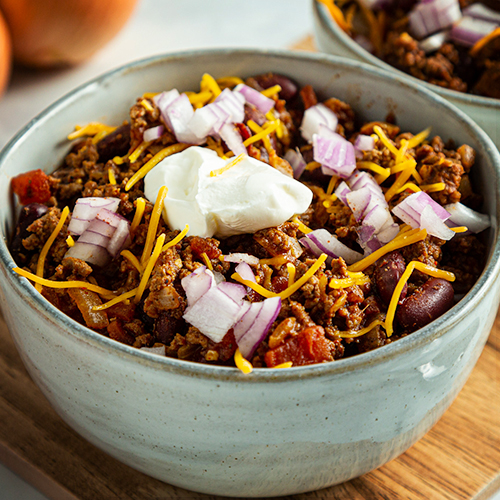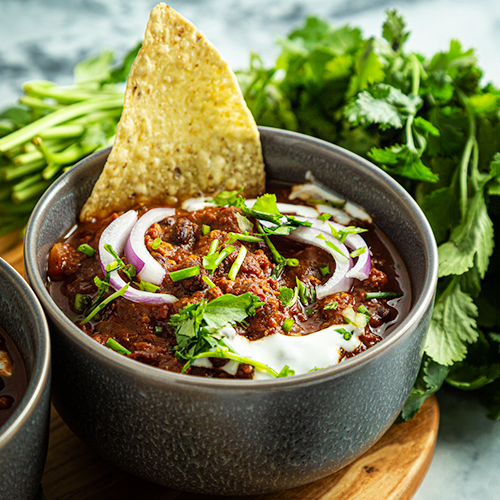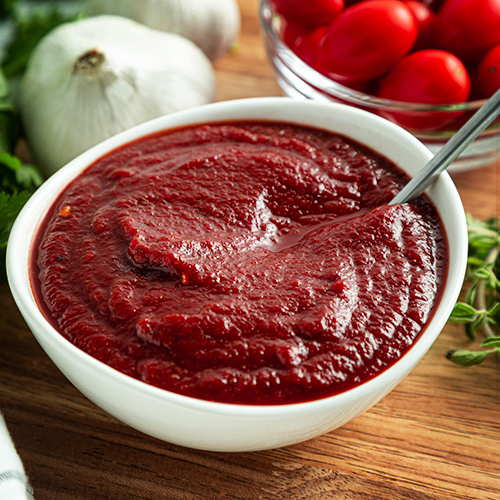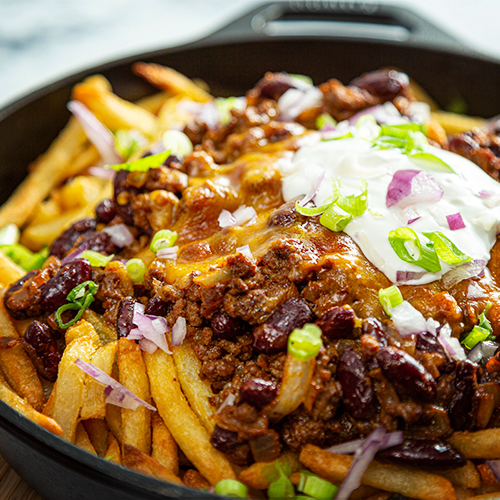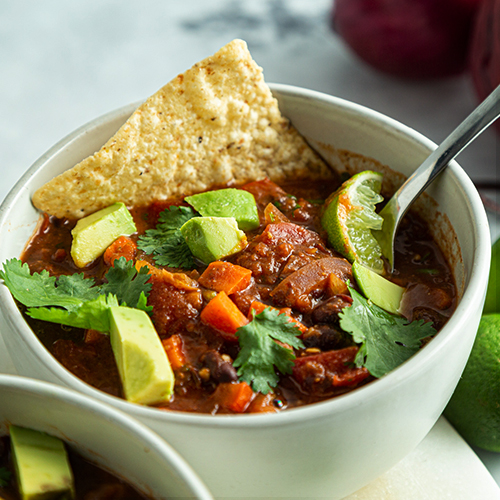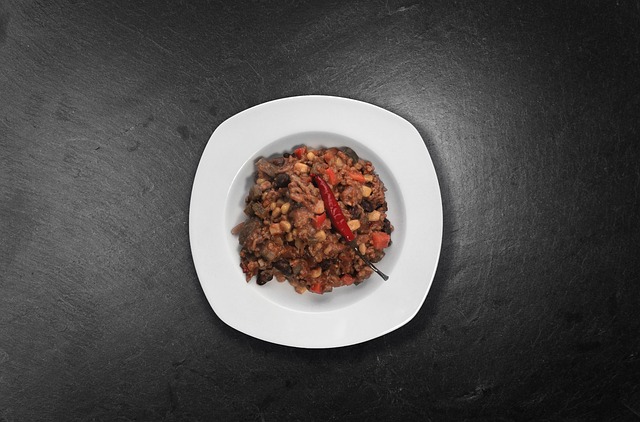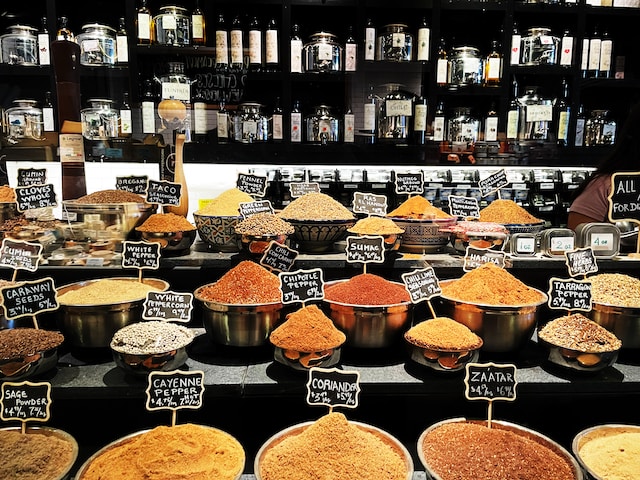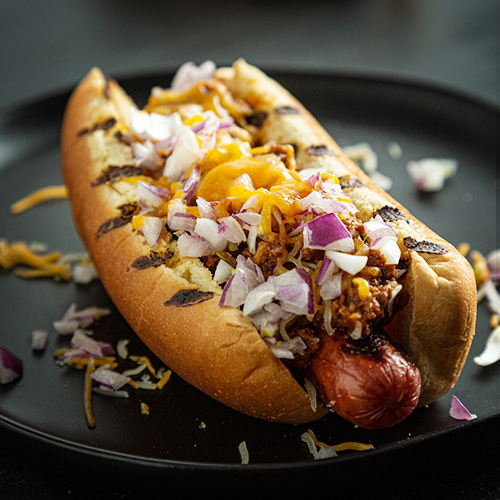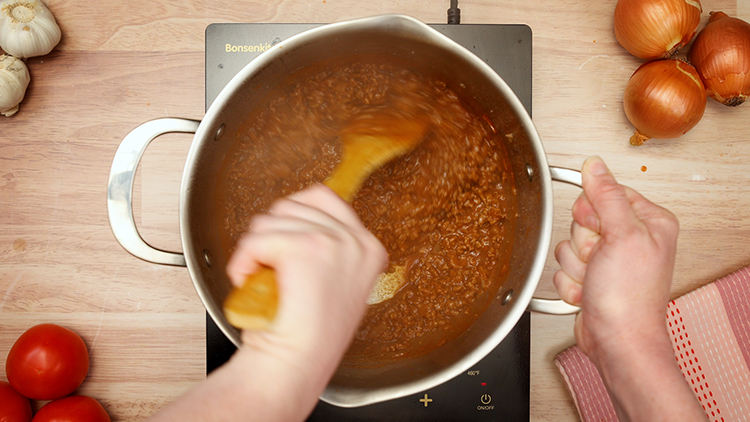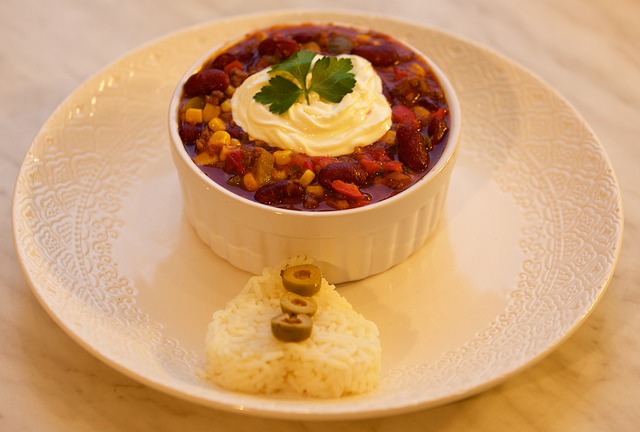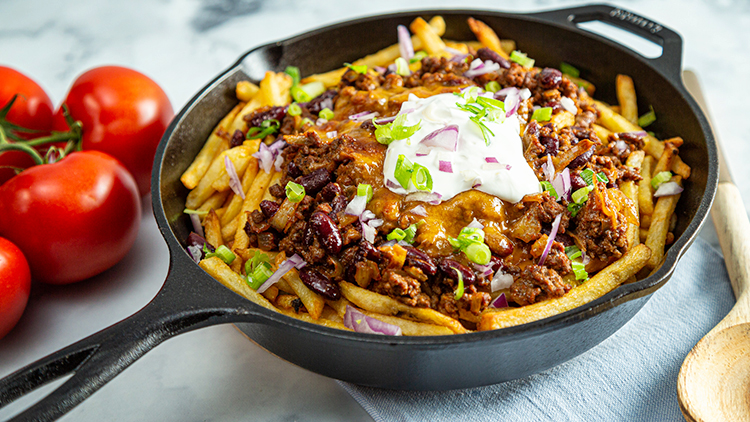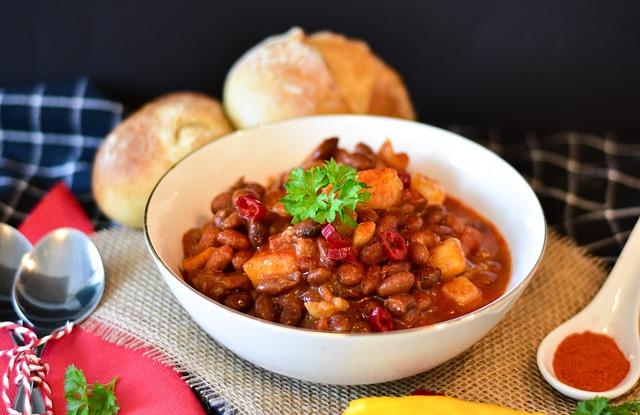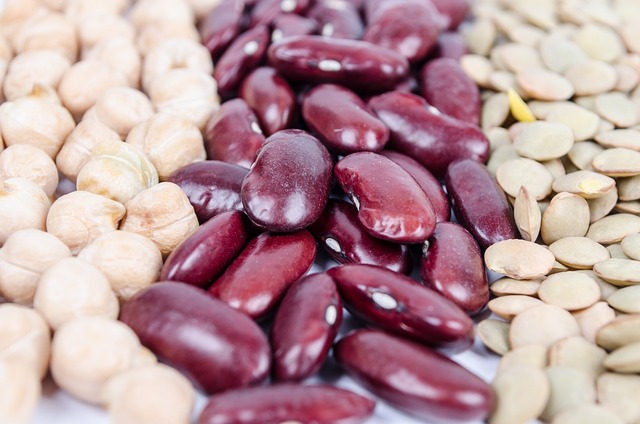Fancy Chili Dishes
Chili, while delicious, is not usually considered fancy. It’s a meal many people can whip up on the fly with the ingredients they have on hand, and it doesn’t need to take long to make. However, that doesn’t mean it is only for simple dinners. Chili is a versatile meal with plenty of ways to make fancy chili dishes simply by switching the ingredients or toppings.
- Switch ground beef for ground pork or Italian sausage.
- Instead of water or stock, add wine or beer as your liquid with the chili.
- Sun-dried tomatoes or miso paste can add a touch of umami.
- Add a splash of coffee after adding your tomatoes, beans, meat, and veggies.
- Try other spices like cinnamon, tandoori spice blend, or garam masala.
- Char your chili peppers instead of sautéing them.
- Sauté garlic before combining it with your other ingredients to bring out subtle nuances in the flavor.
- Put your chili in an edible bowl like a bread bowl or hollowed-out sweet potato.
Try making any of these changes in your favorite chili recipe to add a touch of class and unique flavorings that will elevate a dish your family has had a million times before to new heights.

